The world’s fmcg giants have soaked up plenty of pressure, and are looking to go back on the attack. Can they prosper in the post-Covid environment?
The world’s largest fmcg companies are on the defensive. In the face of soaring inflation and global volatility, their game has gone from one of attack, to one that has simply aimed to hold on to volumes.
That’s been no easy feat amid such unprecedented pressures. Fmcg companies had only just recovered from covid when inflation spiked to a 40-year high in 2022 – pushing up costs of commodities, logistics, energy and labour. What’s more, Russia’s invasion of Ukraine created yet more volatility on the global stage.
Against this backdrop, you might expect the Global 50 to have suffered. Yet their overall revenue growth last year was the highest in a decade. Although this was largely driven by price, volumes have held up too.
So how have the Global 50 managed to remain so resilient? And, now the game looks set to move back in their favour, are these consumer giants ready to go back on the attack?
The industry’s biggest players have certainly performed better than feared in the circumstances. “In a pretty turbulent market, most indications suggest many have outperformed their wider markets and have shown the ability to navigate that disruption with their strength of brand and global reach,” says OC&C managing partner Will Hayllar.
Diageo
Sales: $19bn (+8.6%)
Margin: 33% (+1.5ppts)

The spirits giant recorded strong revenue and profits growth in 2022, thanks to a broad-based recovery across multiple geographies, channels and brands. Organic growth hit an impressive 21% as both volumes and price/mix saw double-digit improvements. Its stellar growth reflected the wider recovery in on-trade and resilient off-trade demand as well as market share gains and the benefits of premiumisation. All regions were in growth, with Europe up 26% and North America 17%.
Indeed, overall revenues across the 50 companies in the index grew 10.9% in the last completed financial year, up from 9.3% in the previous period and 1.1% before that. With little impact from M&A, this was driven by organic growth, which was up 11.4% across the companies that detail organic figures.
Notably, these suppliers were able to push through rapid price increases to mitigate their soaring costs: price/mix growth stood at 10.7%.
“Large investment grade companies have shown a strong degree of resilience as they have been able to pass through quite rapidly the price increases that were needed with only modest volume attrition,” says Moody’s senior VP Paolo Leschiutta.
As Moody’s senior analyst Lorenzo Re points out, this was helped by the sheer heft of these companies and their brands, which gives them an edge in retailer negotiations. Essentially, they are less likely to face delisting than smaller brands.
Dannatt adds: “Weaker brands have found it more difficult to hold their own through this environment and have faced bigger volume elasticity as consumers selective choose to trade up into products their really value or care about.”
The uniform need for all players to recover pricing also helped, says Rothschild global head of consumer Akeel Sachak. “Everyone has taken pricing in this cycle and therefore relative pricing remains where it was previously and so nobody has really suffered,” he says.
“There is no real talk about having to give back that pricing and pricing elasticity of demand has been much lower than anyone anticipated.”
That latter part is the crucial. Against these prices rises, there has been little damage to volumes, which rose 0.8% across the Global 50. That figure is in line with much of the previous decade. Volume growth has largely been close to 1% – the only obvious outlier was the Covid-driven 3.4% volume growth of 2021.
It serves to illustrate the resilience of the top consumer goods companies in the face of wider downtrading to private label and cheaper brands. In Europe, private label value share has risen from 34.6% in 2021 to 36.4% 2022, fuelled by the discounters taking share across major markets.
Not only has the global 50 have stood firm against this threat, but OC&C found own label was not the winner across all categories. Brands have taken back share in Europe in areas such as beauty, beer & cider and baked goods. And even in areas where private label won share, such as the UK laundry detergent market, the largest brands were still able to win share at the expense of smaller players.
Moutai
Sales: $16.2bn (+11.4%)
Margin: 9% (+1ppts)
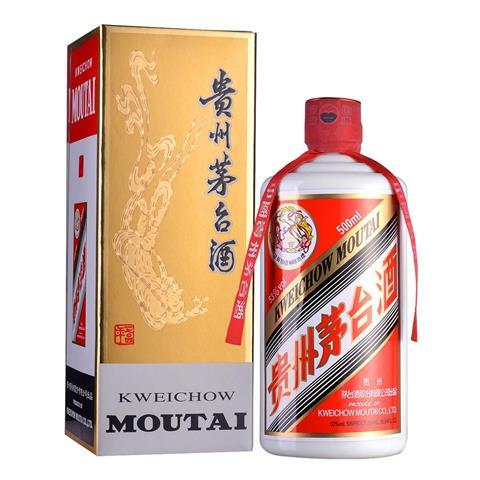
As the hangover from Covid restrictions continued to affect China, Chinese spirits player Moutai drove gains in revenue and profits by focusing on DTC. Direct sales more than doubled in size, to achieve 40% of total revenues, helped by a new dedicated app to expand its reach. The app, which sells products without price mark-up from intermediaries, quickly proved popular. Meanwhile, its embrace of digital has helped maximise channel profitability and drive up unit prices.
This is telling, says OC&C partner Claire Dannatt. She believes it is “a testament to the brand loyalty and strength that lives in those big companies that you can have record price growth go through without much volume backlash down into private label or into other cheaper alternatives”.
There are some wider market conditions on their side, too. Despite the inflationary volatility, consumer confidence and employment have held up against the headwinds. “Accumulated savings plus low unemployment has actually meant fewer consumers have faced the sort of constraints that force them to re-evaluate their consumption baskets,” says HSBC head of consumer staples research Jeremy Fialko.
Then there is the fundamental nature of the fmcg sector. “Consumers need to eat and drink and spend on personal care, so it’s a more protected part of consumer spending on average,” says OC&C’s Hayllar.
This is reflected in share prices. Shares of food and drink players were up 7% in 2022, and tobacco shares were up 21%. That compared with an average fall of 1% in share prices – and double-digit slumps of 39% in tech stocks and 23% in automobiles.
Commodity inflation easing
In the first half of 2023, signs emerged of a transition to commodity price deflation. That followed sharp rises in early 2022 triggered by Russia’s invasion of Ukraine in February.
The overall aggregate food price index is down 23% this year, with vegetable oil down 49% and cereals 27%. Energy costs are also sharply down, with natural gas down 64% year on year after rising fivefold between January 2021 to the summer of 2022.
However, some inputs remain stubbornly high. For example, poor harvests have driven sugar 29% higher again in 2023 despite the wider input deflation. Meanwhile, non-direct inputs, such as labour, remain high amid persistent core inflation, which can be harder to pass through to retailers and consumers.
Low profit margins
It’s not universally good news, though. The industry has had to take a hit on margins, as it absorbed some of the impact of cost inflation.
That’s reflected in Global 50 profit margins falling to their lowest level in the past five years – from 19.1% in 2021 back to 17.8% last year. Only 17 of the 50 companies were able to grow both revenues and margins.
Most significantly, spiking commodity costs and wider inflationary cost inputs resulted in gross margins falling from above 47% pre-Covid down to 43.6%.
To some extent, this was mitigated by cost cutting. The operational cost cutting undertaken by companies – most notably to marketing spend and SKU counts – improved margins by 0.8 percentage points.
Still, Bernstein analyst Bruno Monteyne says it is “debatable” how good shape consumer goods companies are in. “Companies significantly cut market spend because gross margins were under pressure and they have still not fully recovered so far in 2023,” he says.
In particular, he notes performance was far from consistent across the global 50. Key players like Danone, Unilever and Henkel have lost market share and volumes in Europe. Food and drink players have seen the most significant EBIT margin decline of the Global 50 – 1.7% – given their higher structural cost base and lower ability to drive operating cost improvements.
By contrast, some sectors benefited from a pandemic recovery. Covid was still depressing out of home, leisure, China and travel retail sales in 2021 – making for some favourable 2022 comparisons.
LVMH
Sales: $15.6bn (+4.8%)
Margin: 27% (–0.1ppts)

The luxury products group capitalised on the post-Covid recovery of in-store and travel retail last year. It built on the sector-wide rebound of perfumes and cosmetics by launching products in key ranges such as Christian Dior and Givenchy. Its wine and spirits division capitalised on sustained demand for luxury, with Moët & Chandon boosted by the Queen’s Jubilee. Champagne & wine was up 24%, with cognac & spirits up 14%. LVMH also acquired Joseph Phelps Vineyards.
Beer and spirits players were key beneficiaries of these conditions. They delivered a 14.7% jump in sales, boosting overall Global 50 growth. Volume growth reached double digits at Pernod Ricard and Diageo, while Heineken, Carlsberg and AB InBev all achieved volume growth due to structural tailwinds that have started to slow in 2023.
And this year could bring more turbulent conditions. On the plus side, wider macroeconomic headwinds have started to ease.
Inflation in key global markets has begun to normalise in the second half of this financial year. Meanwhile, the vast majority of commodity inputs have drastically eased since their peak in the wake of Russia’s invasion of Ukraine last year.
That should give most Global 50 players the opportunity to recover the margin they were forced to give away last year. OC&C highlights the strong margin rebound in 2008 after a wave of inflation, which went from a 0.4 percentage point margin compression to a 0.9 percentage point expansion the following year.
Moody’s Re expects a similar pattern to emerge this time around. “Companies did not pass through the entirety of cost increases they experienced, so most companies will want to retain the benefit from declines in commodity prices to restore gross margin, which is still below 2021 levels,” he says.
But consumer goods companies aren’t out of the woods yet. Their recovery may be limited by long-term hedging arrangements, which mean lower input costs take a while to filter through to the bottom line. There is also the impact of continued inflation in inputs such as labour and the cost of borrowing, which are typically harder to recover.
This is crucial, considering gross margins need to be rebuilt to fund investment in growth. That investment will be vital if brands are to avoid becoming mired in downtrading and longer-term volume declines.
“Growth will still be the number one priority for these businesses,” says OC&C’s Dannatt. “A lot of them will be worrying about how to manoeuvre from a world of price-led growth back into a world of volume-led growth, which is not an easy pivot to make.”
“A big cut in marketing costs helps you manoeuvre through one or two years while holding on to reasonable profitability, but it is not sustainable for these businesses longer term,” she adds. “A profit-focused strategy around cutting costs or despeccing propositions is extremely short-termist and you quickly start to see revenues suffer.”
HSBC’s Fialko adds: “Most of the management teams are quite conscious of negative sales volumes and will want to ensure that this trend is reversed soon. In most cases we expect that the recovery in margins will be more gradual than the declines.”
“Margin recovery is necessary but insufficient,” agrees Hayllar. “These companies need to focus on the future and you tend to find that those companies what are growing are those that succeed in getting propositions out which appeal to consumers in the long run.”
So the consensus is clear: companies will have to once again invest in areas that were cut back last year, such as marketing and research & development.
Haleon
Sales:$13.4bn (+2%)
Margin: 18% (+1.1ppts)

New entrant Haleon has had a strong first year after being spun out of GSK in July, outperforming market expectations with solid growth. It was able to build on strategic progress made under GSK, posting 13.8% local currency sales growth as a strong cold and flu season boosted volumes. It also benefited from the spin-off by engaging more effectively and directly with retail partners and building a management team dedicated to creating value in consumer health.
While this could result in further pressure on net margins, investors stress the bottom line-focused era of zero-based budgeting is not a blueprint for this next cycle. “Zero-based budgeting is not so fashionable these days,” Sachak notes. “There remains an appreciation of cash flows, but the imperative for big fmcg remains how can we sustainably grow our business in the long run.”
This imperative will be complicated by other market pressures, though. Retailers are beginning to push back on pricing. There is intensifying regulatory scrutiny of competition and profit levels among grocery suppliers. And the threat of own label isn’t going anywhere.
“Private label is going to be more necessary for the grocers to compete with the discounters, so consumer goods companies have to offer good quality products at a premium to private label that is not excessive and pushes customers away,” says Moody’s senior VP Roberto Pozzi.
There will also be pressure to increase promotional intensity as costs come down.
There will also be pressure to increase promotional intensity as costs come down and it remains to be seen whether companies have, according to Sachak, “learned from the mistakes of the way they promoted historically” as they got “completely carried away with promotional behaviour”.
OC&C notes consumer preferences have rapidly shifted over the past few years, which has reshaped category norms as well as retail and supplier relationships. As such, suppliers will need to understand the changed nature of category dynamics and how elasticities have been altered by the significant increase in pricing.
Why has M&A activity slowed?
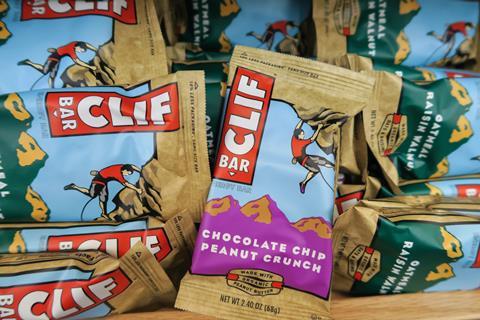
Global economic volatility and spiking interest rates all but froze capital markets activity last year. And dealmaking across the Global 50 was no exception.
M&A activity across the world’s largest fmcg companies fell to levels reminiscent of the height of the pandemic in 2020: 58 deals were done, worth $22bn.
This figure is broadly comparable with the past decade, and is up on 50 deals a year ago.
But in value terms, $22bn represents a share decline from last year’s figure of $65bn and pre-Covid levels (they reached $226bn in 2015).
This was reflective of the average deal size falling to a multi-year low of $382m as the Global 50 typically made small growth bets and took minority stakes.
Diageo and Keurig Dr Pepper were most active, with six deals each. And Mondelez’s five deals, including the year’s biggest deal to buy Clif Bar for €2.9bn, drove the highest collective M&A values at $5.6bn.
Divestments resulted in low deal values as companies tinkered with their portfolios. They were both unable and unwilling to pull off large-scale sales due to a lack of private equity activity as the cost of debt rose.
“The debt and equity capital markets have effectively been closed for a prolonged period,” says Rothschild’s Akeel Sachak. “Anyone selling a business would not necessarily think it has been the right time to move as there isn’t that safety net of financial buyers if strategic buyers fail to show up because they can’t raise the debt.”
While the Global 50 have the strength of balance sheet to do deals without significant debt funding, the overall freeze in the market halted wider M&A ambitions for a time.
However, Sachak believes “that picture will change quite quickly”, pointing to the recent US floats of tech group Arm and e delivery business Instacart as indicators the market is thawing.
“You’re starting to see more alignment between buyers and sellers on the sustainable levels of profitability of business and therefore valuations,” OC&C’s Hayllar comments, noting stabilisation of interest rates the more predictable costs of finance.
Hayllar suggests this could see an increase in the scale of dealmaking across major fmcg groups, although it is likely to remain focussed on portfolio transformation rather than large-scale industry consolidation.
“Many of these sectors are getting to a level of consolidation where it is harder to find good combinations that make sense, so M&A is more about reshaping building blocks and trying to configure them towards sustainable growth,” he says.
”Investors don’t really like transformative acquisitions,” Bernstein’s Monteyne notes.
However, he does suggest the reopening of the market pressure return for some players to make multibillion-pound divestments, such as Unilever spinning off low growth divisions or Reckitt Benckiser scaling back infant nutrition.
Premiumisation
One important dynamic will be how premiumisation plays following last year’s rapid price increases. Driving consumers up the value curve – either to more premium branded products or into their ranges from cheaper local brands – has been a key driver of industry growth in recent years.
Dannatt is optimistic. “Consumers are now fundamentally different than in previous large-scale economic squeezes,” she says. “Where a proposition really resonates with them and they attach strong emotional value to it, they are willing to spend significant sums on those products, so brands need to build those propositions and emotional connections.”
Still, even if consumers are willing, whether they are able to spend is a different matter. “You certainly see historically that premiumisation slows in a period like this as consumers, on average, have less ability to trade up,” says Hayllar.
There have been some signs of consumers cutting back this year on premium goods – particularly in the US, which has affected sentiment around spirits makers like Diageo. On the more positive side, super-premium goods have held up better than expected, shrugging off concerns around a slowdown in China. Sales of LVMH’s high-end champagnes and wines, for example, jumped 24% last year.
This suggests consumers in many markets are not feeling the level of pain normally associated with periods of economic volatility. It also points to an uneven spread of pain, with wealthier consumers benefiting from savings and strong employment.
Given these dynamics, suppliers will need to think carefully about geographical strategies and individual market conditions. China, for example, is heading into deflation, inflation is normalising in the US and it remains stubbornly high in parts of Europe.
Hershey’s
Sales: $10.4bn (+16.1%)
Margin: 22% (–1.3ppts)

US confectionery player Hershey’s is another new entrant. It posted strong double-digit growth, driven by a recovery in snacking in the US and the acquisition of growing brands. Its North American confectionery revenues, which account for 87% of its business, were up 10.7% as the wider market rebounded. But it also drove growth of over 21% in salty snacks as it acquired brands including Dot’s Pretzels to build category expertise and manufacturing capabilities in the space.
Then there’s the impact of the sell-off and scaling back of businesses in Russia. Companies will need to carefully consider the weight they place on protecting volumes in difficult markets in Europe, while weighing up potential softness in demand in the US against the confidence they have in the Chinese economy.
Another factor to consider is M&A. It has had very little impact on growth in recent times – a freezing of the capital markets dropped Global 50 deal activity to a quarter of average levels. But as conditions stabilise, that all looks set to change.
Major fmcg groups will likely continue to seek growth assets to bolster their portfolio. And OC&C suggests changes in the value of supply chains could result in new M&A approaches as groups target more capability-led acquisitions – targeting areas such as AI and technology or ESG.
“There has been a very significant change to the value chain and source of advantage that raises questions about what is right to own in-house or outsource,” Dannatt says. “For example, manufacturing is a good example where co-manufacturing could give suppliers more agility to respond to market trends than owning production facilities.”
The strategic questions facing the globe’s largest fmcg players in a post-inflationary landscape are only intensified by the scale of change many leading players are going through themselves.
Rothschild’s Sachak notes leadership changes at Reckitt Benckiser, Danone, Unilever and PepsiCo, among others. Meanwhile, activist investors pushing for change remain on the shareholder register of a number of these businesses.
“The different leaders at the helm of these businesses will do different things as they’re not weighed down by the baggage of their predecessors,” he predicts.
Emerging from a crisis brings industry opportunity, but it also threatens the status quo. The fmcg giants have relied on their brand strength and scale to ride out turbulence, but sitting back and expecting to prosper in more benign conditions is not an option.
The post-inflationary world is a different place to the pre-Covid market – and will require a very different approach. Those that prosper will be those able to pull the right mix of levers now to strengthen their brand and market position and position themselves for the next phase of growth. It’s time to go from defence to attack mode.
The rise of the consumer health pureplay

This year is the first time ‘consumer health’ pureplays have entered the Global 50 index – and it could be a sign of things to come given the category’s long-term growth dynamics.
Before last year, large-scale consumer health businesses were typically housed within larger pharmacological groups.
But the spin-outs of Haleon from GSK and Kenvue from Johnson & Johnson has drawn wider investor attention to the space, which has only intensified following the strong outperformance of Haleon since its launch (see box, left).
OC&C’s Claire Dannatt sees significant opportunity in the consumer health space – not just for specialist players, but for wider fmcg groups to increase their exposure to a growth market.
“We’ve already seen Unilever try to buy Haleon before it was spun out and I wouldn’t be surprised if you saw further transformative M&A in the space,” she says.
“These consumer health businesses have always been a little bit at odds with their pharma parents given the very different business models,” she says. “So there is more potential for these businesses to be spun out and deploy a different set of value creation levels.”
She points to a number of consumer goods-focused companies making small bets in the space – including Unilever and Nestlé – and expects interest to deepen. “Covid was an accelerant for what was already in place as a set of structural trends as consumer health consciousness has been rising for a long time.”
“Consumers are trying to manage their own health more as healthcare systems around the world have come under more pressure and it is in governments’ interests to support people in that self-management of healthcare.”
That trend has been accelerated by regulatory movement to make more drugs available over the counter, as consumers are encouraged to be more proactive in their health. Ageing populations and increased penetration of consumer health products among younger demographics are providing additional tailwinds.
There is also a strong opportunity in developing markets, where consumers have not previously been purchasers of consumer health products, but are becoming more aware of healthcare options.
“There are a bunch of demand and supply factors that make it a high growth and attractive space to participate in,” Dannatt says.
“For the rest of the Global 50 it is an interesting opportunity for those that could create value in the space given it offers good profitability and potential growth.”








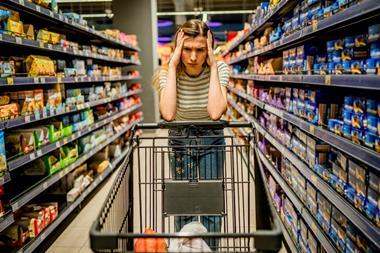
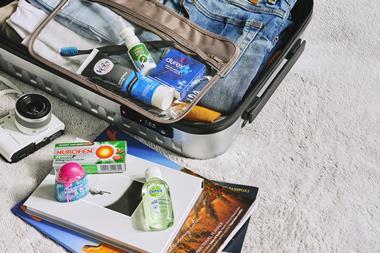
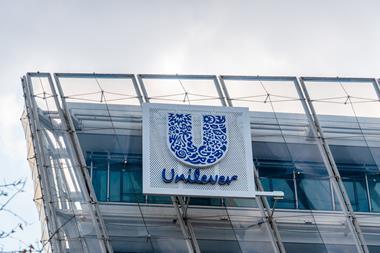









No comments yet